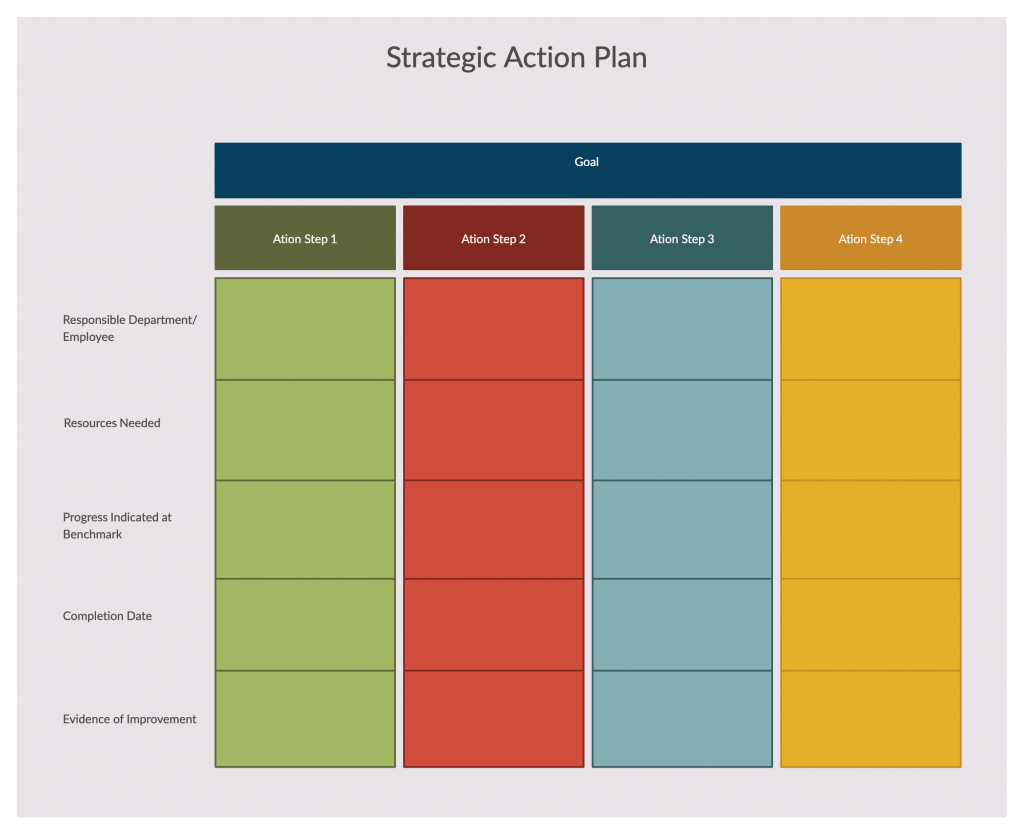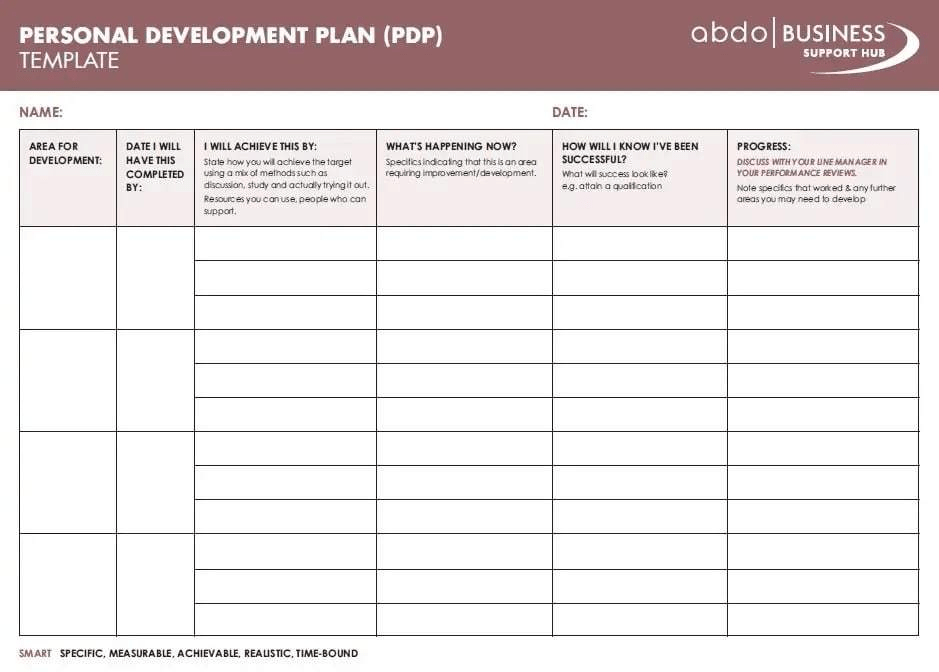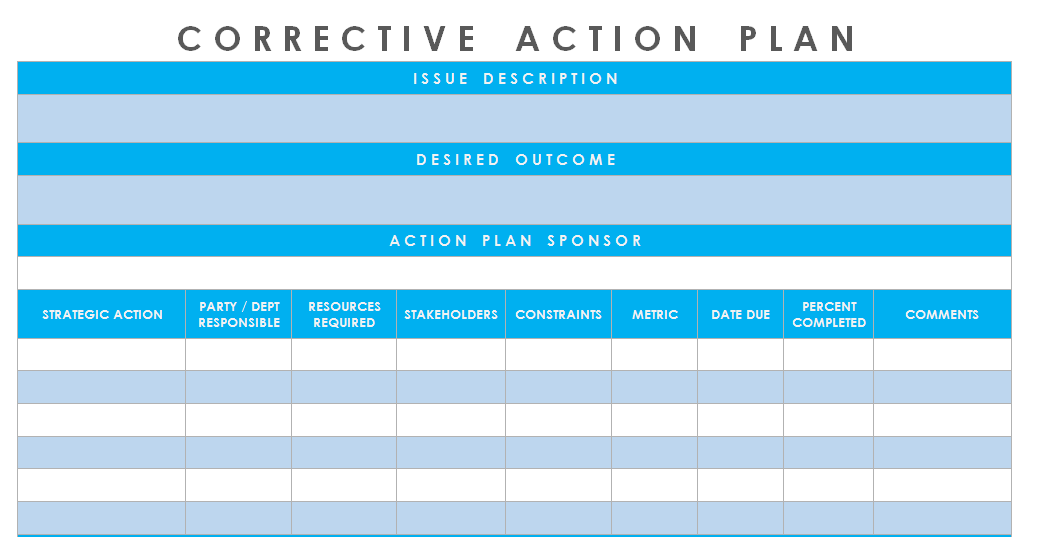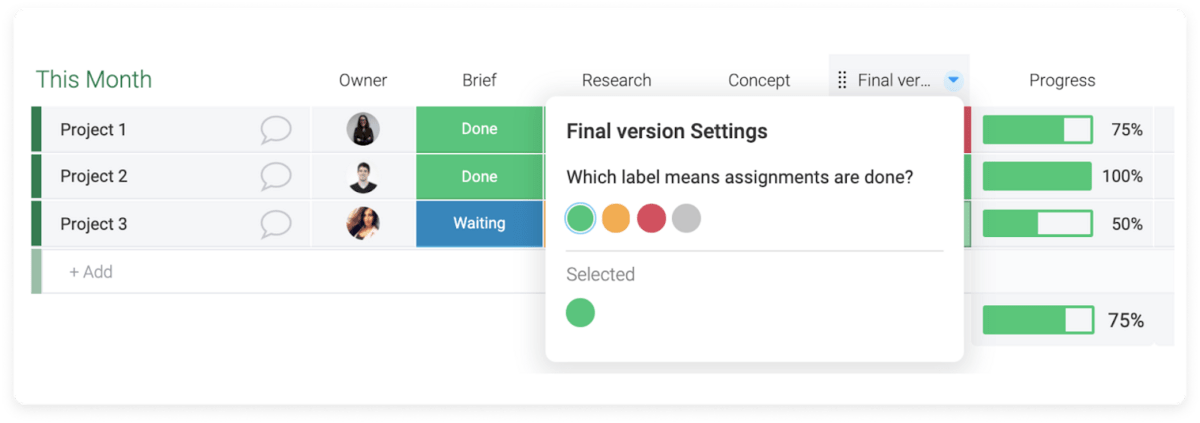Action plan templates: Why they’re important + examples
Blog: Monday Project Management Blog
We’ve all heard the phrase, “If you fail to plan, you plan to fail.” But planning can be a time-consuming process, and all too often, we just want to dive into fixing the problem we’re trying to solve. Plus, many of us aren’t particularly confident developing an action plan from scratch.
That’s why having a customizable, pre-built action plan template on hand is crucial. Action plan templates provide a framework for your goals, meaning you can jump straight into planning instead of wasting time planning how you’re going to plan.
In this article, you’ll learn how action plan templates can transform your business and personal planning processes and gain inspiration from a variety of action plan template examples. Plus, we’ll share a powerful action plan template on monday.com and show you why planning work on our Work OS is a lot more efficient than messing around with spreadsheets.
What is an action plan template?
An action plan is a detailed blueprint that outlines the steps you, your team, or your organization will take in order to achieve a specific goal you have. As you might’ve guessed, an action plan template, then, is a pre-structured document that gives you a framework for crafting your new action plan.
Action plans include very specific information, such as:
- A description of each action or task to be completed
- The person responsible for each action
- Due dates for each task
- Resource required to complete the action
- Space to reflect or take notes after you have completed a task
An effective action plan template has designated spaces for each aspect you need to cover, often presented in a table format, like this:

Why use an action plan template?
The main reason leaders and managers choose to use action plan templates is that they speed up the strategic planning process. Rather than spending unnecessary time designing the document they’ll use to plan, project managers can simply pull up their template, save a new copy — keeping the existing template intact — and get straight to work scheduling and assigning tasks to be done.
Additionally, templates help to ensure consistency across plans and teams. When your organization uses the same action plan template for the whole company, it’s easier for team members to interpret and understand the plan — because they’re familiar with the format — and contributes toward an organized, professional appearance.
Action plan templates help project organizers to more effectively plan by offering predefined categories and columns, reducing the chance of human error or information being left out of an action plan. Plus, you can apply any learnings you discover during the project management process to your own template. That way, you’ll consistently improve subsequent action plans.
While completing a project, you might find that some of the tasks in your task lists didn’t have clear outcomes. That is, it wasn’t immediately obvious how to identify when the task was complete. So, you could borrow from the SMART goals framework — Specific, Measurable, Attainable, Relevant, Time-bound goals — and include a new column in your action plan template to note how you’ll measure if the task is complete.
And when using an action plan template built on a Work OS like monday.com, you can add your action plan to relevant project boards, build cross-team automations, and more — making it easier to collaborate with a distributed team.
What are some examples of action plan templates?
Business action plan template
This template outlines how to write an action plan to track progress towards a specific business goal.

This action plan begins by detailing the primary goal you have, with the first column dedicated to a breakdown of each action required. For example, if your business goal was to design and launch a new website, your individual actions might include:
- Gathering design assets
- Choosing a color scheme
- Copywriting for new website pages
- Assembling design and development teams
- Creating design wireframes
- Design and development
- Testing
- Launch and promotion
Note that the second to last column in this action plan template is reserved for noting potential hazards. This is helpful for identifying roadblocks that might get in the way of achieving your goals, so you can plan around them.
Personal development action plan template
Though action plans are most often used in a business context, they can be an extremely useful tool to help you stay motivated and work toward your personal goals.

This template allows you to break down your actions into a step-by-step sequence, and includes a “How will I know I’ve been successful?” column to ensure that the actions you write down have a clear outcome.
Corrective action plan template
Creating an action plan can also be a great way to solve a specific business problem, or even an issue with a specific employee’s performance, as opposed to working toward goals. This is known as a corrective action plan, as shown in the example template below.

This action plan template includes important columns such as metrics and constraints, so users can know how to complete tasks, and can plan for potential roadblocks along the way.
A “percent completed” column is included as a helpful way of measuring your progress toward the goal.
monday.com’s action plan template
Like you’ve seen in the examples above, the typical action plan document is formatted as a PDF or Microsoft Word document. While this is fine for goal setting and for creating the plan itself, it’s not so great for putting the plan into action.
That’s why we’ve purpose-built a flexible, customizable, intuitive action plan template on the monday.com Work OS.
When you design your action plan on monday.com, you can:
- Access multiple views (such as table, Kanban, and timeline) to work in a manner that suits your needs.
- Assign tasks to individuals and notify them instantly.
- Comment and collaborate on tasks to keep communication contextual.
- Design custom automations to save valuable time and ensure nothing slips through the cracks.
- Report on progress with the Progress Tracking Column.

That means that once you’ve got buy-in from your team on the plan you’ve created, you can easily copy actions, dates, and assignees over to your task management board and get moving.
How to build an action plan
Never created an action plan before? Follow this simple guide and get started with the free template above.
1. Determine your goals
First, you need to understand what you’re trying to achieve. Make this goal as specific as possible.
For example, “increase sales” is not a clear enough goal. “Increase sales by 20% in quarter three” is more specific and allows you to set a metric for having achieved it.
2. Break down the steps required to achieve each your goal
What actions are required to get there?
In this example, that might include:
- Hire 3 new sales development representatives
- Increase content marketing budget by $20,000
- Implement a new sales training program for new hires
3. Determine task dependencies and priorities
Remember: you can’t do everything at once! Now that you’ve broken down that big goal into bite-sized chunks, you need to figure out the ideal order for completing the tasks. In the above instance, you need to hire new sales representatives before you can start a sales training program, for example.
4. Add deadlines
When do you need to complete each task? Setting deadlines for each individual task helps your team stay on track but also allows you to identify if your timeline for the larger goal is realistic.
5. Identify the resources you need
What’s getting in the way of completing these tasks? What do you require, perhaps from leadership or from another team, to meet or exceed your goals? In our sales team example, we might require some assistance from the HR department to advertise an open role and attract new applicants.
6. Assign tasks to individuals
Who is responsible for each action? Assign a clear task owner to each task. Ownership doesn’t just make someone feel accountable; it empowers them to take initiative and solve problems without dragging in management at every twist and turn.
7. Agree on a plan to review progress
Before you jump in and start your project, determine how you’re going to measure progress toward your goals.
Will you review your action plan every day or every week? Who will be responsible for updating the plan to reflect progress, the task assignees or the project leader? Determining these answers up front means the action plan remains a living document that reflects actual progress.
FAQs about action plan templates
How do I write an action plan?
To write an effective action plan, first, download our free action plan template, then follow these steps:
- Determine your goals.
- Break down the steps required to achieve each goal.
- Determine task dependencies and priorities.
- Set milestones.
- Add deadlines.
- Identify the resources you need.
- Assign tasks to individuals.
- Agree on a plan to review progress.
We outlined this process in more detail above.
What is an example of an action plan?
Action plans are structured documents designed to help users achieve personal or organizational goals, identifying the steps they need to complete to achieve those goals, setting due dates and priorities, and determining potential roadblocks and resources required. Action plans often look like this:
What should an action plan look like?
Your action plan should include, at a minimum:
- The high-level goal your action plan seeks to achieve
- A breakdown of the individual actions or tasks you’ll complete
- Due dates for each task
- A designation for each task of the person responsible
For a more in-depth action plan, include these columns:
- Start and end dates
- Potential roadblocks
- Metrics or measurements of success
- Percentage complete
- Comments/notes
Contact us, we’re here, 24/7

The post Action plan templates: Why they’re important + examples appeared first on monday.com Blog.
Leave a Comment
You must be logged in to post a comment.








